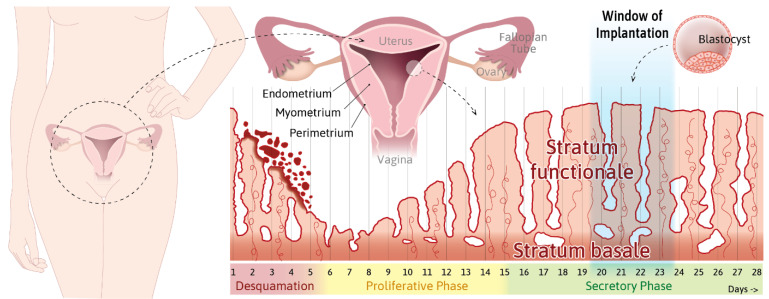Figure 1.
The plasticity and contractility of the human uterus require the constant adjustment of the endometrium to prepare and support embryo implantation and enable subsequent embryo development. The scheme highlights the multilayered wall structure of the uterus and menstrual cycle-dependent endometrial changes. The uterus is positioned in the pelvis below the peritoneal cavity. The inverted cone-shaped organ is connected through the Fallopian tube to the ovaries and opens into the vagina. It consists of three major layers: the outer connective tissue-rich perimetrium, the smooth muscle-containing contractile myometrium, and the inner endometrium. The endometrium can be further subdivided into the permanent stratum basale and the transitory stratum functionale, which is shed during desquamation and rebuilt during the proliferative phase, with changes in differentiation during the secretory phase to prepare for blastocyst implantation during the window of implantation. For further details, see Info Boxes 1 and 2 (Appendix A).

